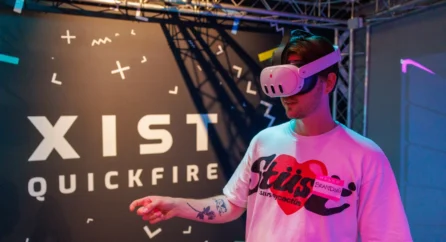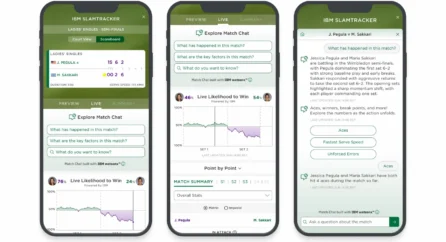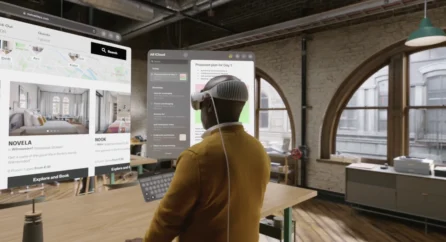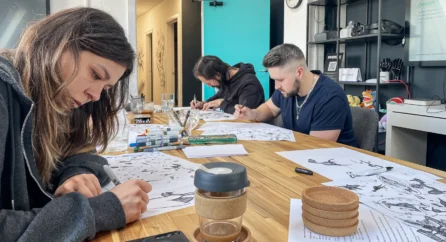Home Knowledge Base Wired for Learning: How Immersive Tech is Powering Training in the Energy Sector
Wired for Learning: How Immersive Tech is Powering Training in the Energy Sector
28th May 2025

Having spent part of my career working in oil and gas training, I know first-hand the challenges that come with upskilling people in high-stakes environments. When you’re dealing with remote rigs, live substations, or critical safety procedures, the cost of getting it wrong isn’t just financial – it‘s potentially life-changing.
We’ve all sat through PowerPoint-heavy inductions, out-of-date eLearning courses, or watched the same training video loop for the third year running. But, there’s a shift happening. Immersive technology – whether it’s virtual reality (VR), augmented reality (AR), or a 3D world game – is no longer just a novelty or a ‘nice-to-have.’ The tech is evolving, and it’s changing the way we learn. In sectors like energy, that change can’t come fast enough.
With new technologies come new risks, new systems, and new skills required. The question is: how do you prepare people for these harsh and dangerous environments quickly, safely, and effectively?
The answer is: It’s hard. Extremely hard, actually. We know that, and as one major electrical operator we once worked with put it: “You can’t afford to let people learn on the job when the job is a live electrical grid.”
This is where immersive solutions shine. Instead of flying engineers halfway around the world for practical training – or worse, relying on theory alone – immersive experiences allow teams to step inside realistic scenarios. They can practice shutdown procedures on a virtual platform. They can experience a confined space emergency in VR, they can be dropped into a virtual ocean scenario, and crucially, they can make mistakes – safely.

And the numbers back it up. A PwC study found that VR learners are four times faster to train than in the classroom, and 275% more confident in applying their skills after VR sessions. In the energy sector, where confidence and competence can be the difference between safety and catastrophe, these aren’t just impressive statistics, they’re starting points.
Back in 2014, I remember working on a major project where the cost of mobilising a crew for training ran into the hundreds of thousands. Travel, accommodation, logistics, equipment hire, food, the quality of the trainer on the day, PPE. But beyond the cost, the human factor was just as important. Feedback was generally good, but there were consistent comments that the scenario didn’t feel ‘real’ enough. The bangs and crashes weren’t big enough.
Obviously, I wasn’t allowed to set fire to an oil rig in the North Sea, but nowadays – without even leaving the confines of a training room or office – I can show you what it’s like. Immersive learning breaks down all those barriers. Well – apart from the food, of course. You wouldn’t want me to make anyone’s lunch.
But, it’s important to say, technology alone isn’t a silver bullet. The real impact comes when immersive tools are part of a thoughtful, well-designed learning journey. That means clear, relevant learning objectives. Scenarios rooted in real-world tasks. Instant feedback. Emotionally engaging experiences that resonate. When done right, it’s not just another piece of training.
As one offshore installation manager once told me after using our block and bleed demo: “It’s the first time I’ve felt my heart rate go up during training, and that’s exactly how it should be.”
Energy, by its definition, is about power. But in this evolving landscape, the real power lies in knowledge, and in how well we equip our people to handle the ever changing challenges ahead. Immersive technology gives us the chance to do just that: to make learning safer, faster, with a clear understanding of human factors.
Having seen the challenges of traditional training and the potential of immersive learning first-hand, I’m convinced this isn’t just a trend – it’s the future of safe, effective learning, and it’s a future worth investing in.

Jon Rogers
Jon has been working in creative and educational industries for over two decades, with experience at KLM Airlines, the UN, Swift, and Lotus Cars, where he won the coveted Princess Royal Award for a range of worldwide projects. With a strong passion for blending storytelling and technology, he loves bringing original ideas to life and working with incredibly talented people. Outside of work, he enjoys writing, both word and music, spending time with his family, and running his '90s Britpop party night, where he has DJ'd at festivals and iconic venues across the UK.
Related posts

How creative agencies can use immersive tech to drive results

by Infinite Form
13th Sep 2024

How creative agencies can use immersive tech to drive results

by Infinite Form
13th Sep 2024

How creative agencies can use immersive tech to drive results

by Infinite Form
13th Sep 2024















